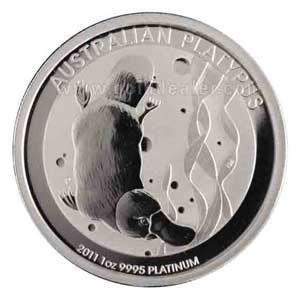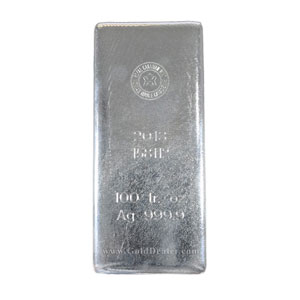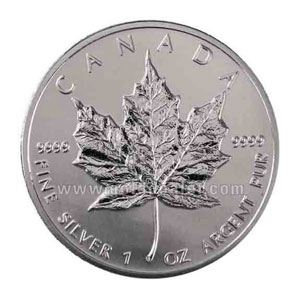Commentary for Thursday, April 3, 2014 – Gold closed down $6.10 at $1284.60 reacting to a stronger dollar. The dollar was stronger relative to the euro because the European Central Bank (ECB) met and decided to keep rates unchanged (0.25%) as rumors the last few days claimed that rates might be pushed lower because of continued economic problems. What really caused the dollar to move lower was ECB President Draghi’s comment that more dramatic monetary action was likely given the current almost deflationary environment. This loose monetary policy answer to lack luster economic activity is now commonplace as modern banking theory believes governments are the real answer to all problems large or small. It looks like Greece will receive another 8 billion euros in bailout funds and the news was never even mentioned in the mainsteam press. The payback will be discussed when things get better but my bet is that the money being used to prop up many smaller EU economies is the equivalent of another Marshall Plan.
Another Chinese rumor of a slowing economy might prompt a similar stimulus response. Last year the growth in China was 7.7% and this year the government target is 7.5%. This does not sound much like slowing but government monetary intervention might be in the process of becoming a permanent part of long term economic planning. I am not sounding the warning bell yet but where is all of this going?
Silver closed once again below the important $20.00 level down $0.25 at $19.78. This too is a market lacking buzz and so expect the same type of action until some type of new dynamic is introduced. We sold a lot of RCM 100 oz Silver Bars and Canadian Silver Maple Leaf 1 oz coins.
Platinum closed up $7.00 at $1444.00 and palladium was also higher up $1.00 at $789.00. South African platinum mining interests (Anglo and Lonmin) have announced a force-majeure. This is fancy talk which allows the mine owners to not honor contractual agreements with suppliers of things like dynamite and drill bits. This of course is the result of continued problems with union workers or perhaps is just another ploy used by mine owners to pressure lower wages. I will leave that up to the reader to decide. The popular platinum product sold today was the Australian Platinum Platypus 1 oz
This from Kitco is really worth reading: The Changing Face of Global Risk – Nouriel Roubini – NEW YORK – The world’s economic, financial, and geopolitical risks are shifting. Some risks now have a lower probability – even if they are not fully extinguished. Others are becoming more likely and important. A year or two ago, six main risks stood at center stage:
A eurozone breakup (including a Greek exit and loss of access to capital markets for Italy and/or Spain).
A fiscal crisis in the United States (owing to further political fights over the debt ceiling and another government shutdown).
A public-debt crisis in Japan (as the combination of recession, deflation, and high deficits drove up the debt/GDP ratio).
Deflation in many advanced economies.
War between Israel and Iran over alleged Iranian nuclear proliferation.
A wider breakdown of regional order in the Middle East.
These risks have now been reduced. Thanks to European Central Bank President Mario Draghi’s “whatever it takes” speech, new financial facilities to stabilize distressed sovereign debtors, and the beginning of a banking union, the eurozone is no longer on the verge of collapse. In the US, President Barack Obama and Congressional Republicans have for now agreed on a truce to avoid the threat of another government shutdown over the need to raise the debt ceiling.
In Japan, the first two “arrows” of Prime Minister Shinzo Abe’s economic strategy – monetary easing and fiscal expansion – have boosted growth and stopped deflation. Now the third arrow of “Abenomics” – structural reforms – together with the start of long-term fiscal consolidation, could lead to debt stabilization (though the economic impact of the coming consumption-tax hike is uncertain).
Similarly, the risk of deflation worldwide has been contained via exotic and unconventional monetary policies: near-zero interest rates, quantitative easing, credit easing, and forward guidance. And the risk of a war between Israel and Iran has been reduced by the interim agreement on Iran’s nuclear program concluded last November. The falling fear premium has led to a drop in oil prices, even if many doubt Iran’s sincerity and worry that it is merely trying to buy time while still enriching uranium.
Though many Middle East countries remain highly unstable, none of them is systemically important in financial terms, and no conflict so far has seriously shocked global oil and gas supplies. But, of course, exacerbation of some of these crises and conflicts could lead to renewed concerns about energy security. More important, as the risks of recent years have receded, six other risks have been growing.
For starters, there is the risk of a hard landing in China. The rebalancing of growth away from fixed investment and toward private consumption is occurring too slowly, because every time annual GDP growth slows toward 7%, the authorities panic and double down on another round of credit-fueled capital investment. This then leads to more bad assets and non-performing loans, more excessive investment in real estate, infrastructure, and industrial capacity, and more public and private debt. By next year, there may be no road left down which to kick the can.
There is also the risk of policy mistakes by the US Federal Reserve as it exits monetary easing. Last year, the Fed’s mere announcement that it would gradually wind down its monthly purchases of long-term financial assets triggered a “taper” tantrum in global financial markets and emerging markets. This year, tapering is priced in, but uncertainty about the timing and speed of the Fed’s efforts to normalize policy interest rates is creating volatility. Some investors and governments now worry that the Fed may raise rates too soon and too fast, causing economic and financial shockwaves.
Third, the Fed may actually exit zero rates too late and too slowly (its current plan would normalize rates to 4% only by 2018), thus causing another asset-price boom – and an eventual bust. Indeed, unconventional monetary policies in the US and other advanced economies have already led to massive asset-price reflation, which in due course could cause bubbles in real estate, credit, and equity markets.
Fourth, the crises in some fragile emerging markets may worsen. Emerging markets are facing headwinds (owing to a fall in commodity prices and the risks associated with China’s structural transformation and the Fed’s monetary-policy shift) at a time when their own macroeconomic policies are still too loose and the lack of structural reforms has undermined potential growth. Moreover many of these emerging markets face political and electoral risks.
Fifth, there is a serious risk that the current conflict in Ukraine will lead to Cold War II – and possibly even a hot war if Russia invades the east of the country. The economic consequences of such an outcome – owing to its impact on energy supplies and investment flows, in addition to the destruction of lives and physical capital – would be immense.
Finally, there is a similar risk that Asia’s terrestrial and maritime territorial disagreements (starting with the disputes between China and Japan) could escalate into outright military conflict. Such geopolitical risks – were they to materialize – would have a systemic economic and financial impact.
So far, financial markets have been sanguine about these new rising risks. Volatility has increased only modestly, while asset prices have held up. Noise about these risks has occasionally (but only briefly) shaken investors’ confidence, and modest market corrections have tended to reverse themselves.
Investors may be right that these risks will not materialize in their more severe form, or that loose monetary policies in advanced economies and continued recovery will contain such risks. But investors may be deluding themselves that the probability of these risks is low – and thus may be unpleasantly surprised when one or more of them materializes.
Indeed, as was the case with the global financial crisis, investors seem unable to estimate, price, and hedge such tail risks properly. Only time will tell whether their current nonchalance constitutes another failure to assess and prepare for extreme events. Nouriel Roubini
In the old days you could walk into a good dealership, put down cash and walk away with product. This is still true with us and a few others but most of the volume business is done nationally using the internet. The gold and silver market is not government regulated like the stock market. Other than normal business licenses there is no special requirement necessary to call yourself a precious metal dealer. And the gold business has always had its share of dealers with no regard for your money. So don’t assume that nice dealer on the other end of the phone has your best interests in mind. The chances are literally 50/50 that you are talking to a “phone room” designed to part you from your money so let’s be careful.
To avoid problem dealers (there are at least two still out there) look for precious metal dealers who belong to ICTA (Industry Council for Tangible Assets) and the PNG (Professional Numismatists Guild). Dealers who are members of both organizations are held to a higher ethical, financial and professional standard. Look for memberships in both ICTA and PNG from any national dealer and avoid headaches.
The walk-in cash trade today was on the quiet side. Phone activity was also slow at times. This type of activity is indicative of a public which has lost interest because a stalled, range-bound market takes away the incentive to “act now”.
The GoldDealer.com Activity Scale is a “4” for Thursday. The CNI Activity Scale takes into consideration volume and the hedge book: (last Thursday – 3) (last Friday – 5) (Monday – 4) (Tuesday 3) (Wednesday – 5). The scale (1 through 10) is a reliable way to understand our volume numbers.
On the new GoldDealer.com site: Comex closing prices are posted on the home page and individual product landing pages. Live pricing on the site moves all bullion products up or down during the day.
We reworked the All Bullion Products link on the home page. It now includes our Bid (blue) and Ask (green) prices. Premium quotes vary with product and look like this – “spot plus $15.00” or “spot plus $50.00” and bullion products list them under the live prices on their respective landing pages.
This makes product comparison simple and GoldDealer.com is the only precious metal site on the net with this transparency. Live Chat is doing well and new customers like setting up their own encrypted accounts. We recommend upgrading old browsers to Google Chrome (free/secure) especially as our site becomes more advanced.
Sign up for our daily Gold Newsletter on the Gold Newsletter page if you are so inclined.
Email confirmation using a PDF File when buying or selling is functional and includes payment instructions. You can now see the actual invoice or purchase order on your computer screen.
When you buy or sell please check to see if we have your current email on file and that your computer will accept our email (no spam).
Our four flat screens downstairs with live independent pricing (BullionDesk) are a big hit with the cash trade. This live stream moves all buy/sell prices so the cash buying or selling public can see the markets move on a real time basis. Our site uses the same pricing model so no more guessing.
Our best price guarantee (buying or selling) remains famous so call Kenny (1-800-225-7531) and get more money in your pocket with guaranteed satisfaction. And we include our No-Nonsense Policy (NNP) which clients consider a welcomed extra. And steering is also not allowed. Steering is the trade term used to talk you out of what you want (low cost bullion) and into stuff with big telemarketing commissions. Like us on Facebook and follow us on Twitter @CNI_golddealer. Thanks for reading and enjoy your evening.







